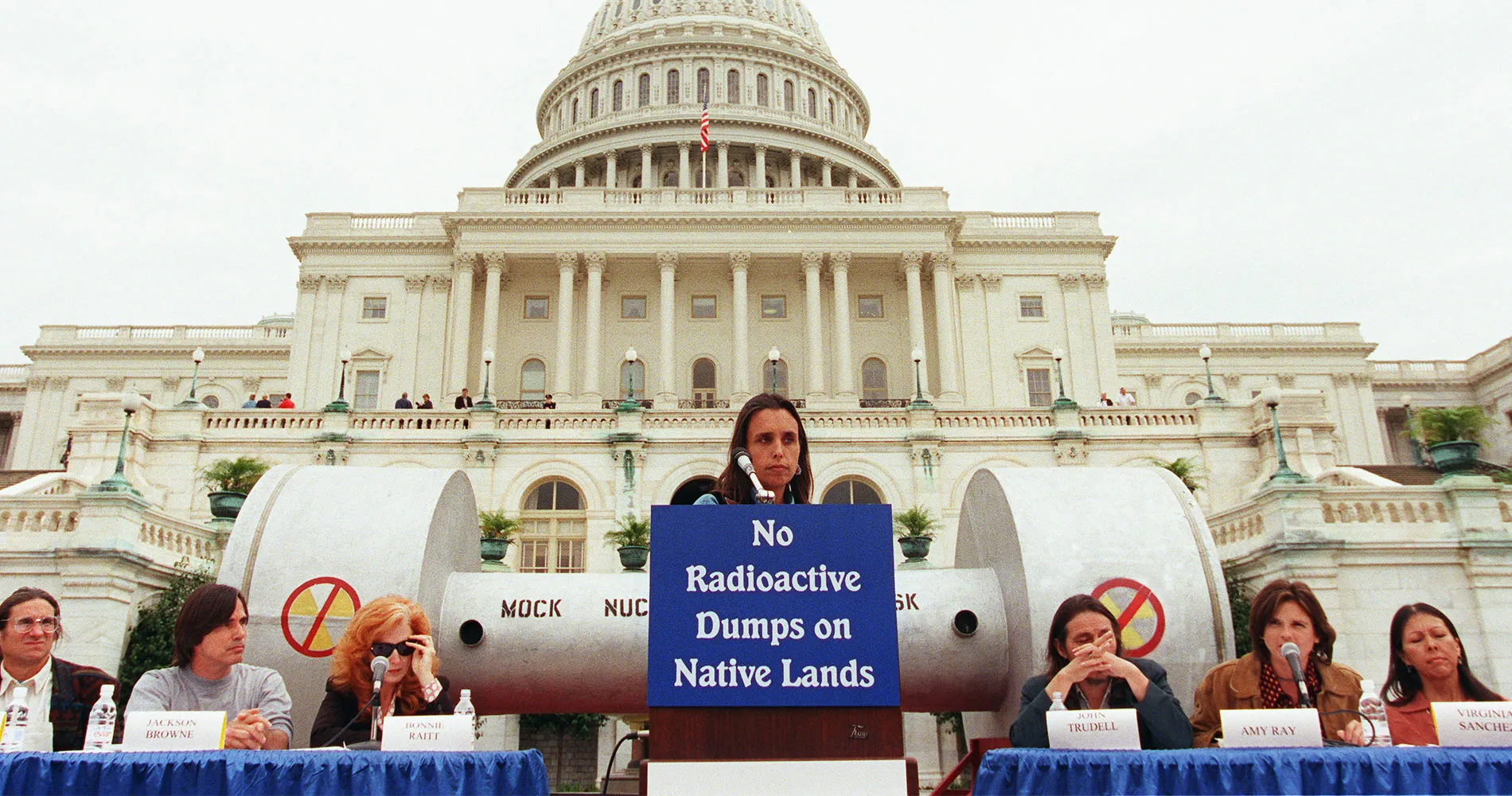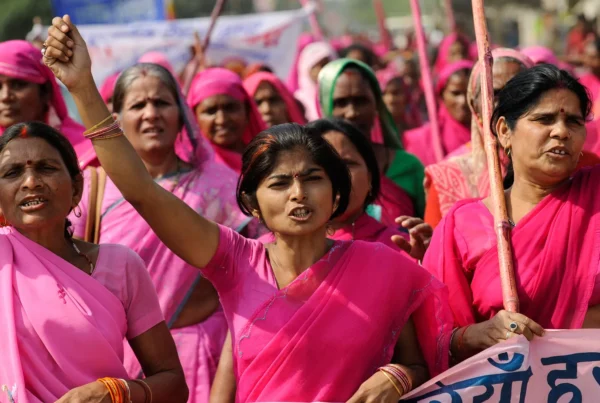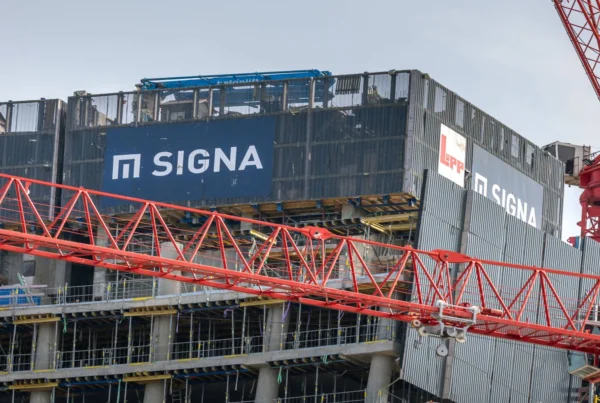The box office triumph of Oppenheimer highlights the power of Hollywood to spin the historical narrative. As captivating as the film might be, the movie omitted a grim reality deeply intertwined with America’s nuclear history: the testing of nuclear weapons, the storage of nuclear waste and illegal uranium mining on American Indian reservations. This oversight raises critical questions about the narratives we choose to tell and the ones which are omitted by design. In a rare show of bipartisanship, the US Senate voted on 7 March 2024 to extend the Radiation Exposure Compensation Act (RECA) to cover health care costs of victims and communities affected by US nuclear activities, uranium mining and nuclear waste storage.
Meric Sentuna Kalaycioglu
12 June 2024
Arabic version | French version | German version
Native American tribes have lost their land twice: once at the hands of colonizers during the westward expansion of the US at the beginning of the 19th century and a second time when the US government used reservation land for indiscriminate testing of nuclear weapons, storage of nuclear waste and mining of uranium.
Several US laws regulating land rights on tribal territories within the US in the 19th century stripped tribes of ancestral lands. The 1934 Indian Reorganization Act cemented federal control over tribes, leading to tribes’ dependence on government funds. This loss of sovereignty allowed the government and private companies to exploit federal Indian reservations for nuclear weapons testing.
The Treaty of Ruby Valley, signed in 1863 between the Western Shoshone and the US government, demarcated the boundaries of several Shoshone tribes across Idaho, Nevada, California and Utah. However, this Treaty, like many others such as the Treaty of New Echota and the Treaty of Fort Laramie signed during that era, would result in a multitude of broken promises on the part of the US government. The Shoshone, who had inhabited the land for millennia, agreed to allow the establishment of military posts and mineral mines in exchange for economic benefits. Little did they know that this agreement would lead to nuclear testing on their ancestral lands.
In 1951, in flagrant violation of the Treaty of Ruby Valley, which only permitted a US military presence, the US government established the Nevada Proving Grounds on Shoshone territory. The land became a primary testing site for nuclear weapons. Over the next four decades, nearly 1000 nuclear tests were conducted, subjecting generations of the Shoshone people to the effects of radioactive fallout.
The Western Shoshone people hold the distinction of being the most bombed nation in peacetime. In comparison to the devastation witnessed in Hiroshima in 1945, where 13 kilotons of nuclear fallout descended upon the Japanese city, a 2009 study in the Nevada Law Journal revealed that between 1951 and 1992, tests conducted on the Shoshone territory resulted in 620 kilotons of nuclear fallout.
The consequences of these nuclear tests have been dire, with the reservation residents experiencing high rates of cancer and leukemia, conditions known for their low survival rates and limited prospects of complete recovery. The nuclear fallout also devastated local ecosystems, harming the flora and fauna vital for sustenance. This environmental damage, coupled with the death of community members, including the key defenders of tribal territories, underscores the enduring impact of nuclear testing on Native American lands.
In 1919, contravening the sovereignty rights guaranteed by the US-Navajo Treaty of 1868, native reservation lands were opened by the Secretary of the Interior for leasing. The Vanadium Corporation of America initiated uranium mining on Navajo lands in 1943 for the atomic-bomb project, but without informing miners or tribal leaders of the substance they were extracting. The secrecy surrounding the project, driven by Cold War security concerns, perpetuated a culture of nuclear secrecy and withheld crucial information including health studies on miners and mine locations.
From the 1940s to the 1990s, the US utilized the Navajo Nation reservation as a uranium source for nuclear weapons and energy production. Mines shifted to private ownership in 1971, and evidence gathered later demonstrated that safety regulations were not adhered to, up to the closure of the last mine in 1990, resulting in over 500 dangerous sites abandoned across the land. Miners and their families remained unaware of the radiation dangers, leading to routine exposure in daily life activities. Despite the enactment of the 1990 Radiation Exposure Compensation Act (RECA), justice remains elusive for Navajo families affected by uranium mining on their land.
In a recent development, communities affected by US nuclear testing and production, along with their congressional representatives are urging the House to expand RECA before it expires in June 2024. The Senate approved a bill on 7 March 2024 to extend and broaden RECA’s scope, initially established to compensate specific groups exposed to radiation.
The new proposal would reauthorize the program for six years and expand coverage to additional communities, including those in New Mexico, Colorado, Idaho, Montana, Guam, and several other states. It would also include post-1971 uranium miners, recognize additional diseases such as chronic lymphocytic leukemia and chronic kidney illnesses, and improve the claims process, making compensation more accessible for Navajo claimants.
The estimated cost of the expanded program is USD 50-60 billion in contrast to the approximately USD 2.6 billion distributed to claimants under RECA since 1990. The bill still has to pass the House before it can be signed by President Biden who has reaffirmed his backing for the bill, indicating his intention to sign it into law should it pass through the House.
The Church Rock Incident, on the Navajo reservation in New Mexico, is categorized by the US Geological Survey as the largest accidental radioactive release in the United States. The 1979 dam failure in the uranium mill resulted in the release of massive amounts of radioactive material and toxic wastewater into the Puerco River, contaminating the land and water sources. For several days the Navajo people were unaware of the incident’s danger to their health. Moreover, New Mexico Governor Bruce King declined the Navajo Nation’s plea to designate the site a federal disaster area, limiting assistance for affected residents. The Church Rock incident released more radioactivity than the Three Mile Island accident, which occurred four months earlier. Despite this the Church Rock incident received far less to no media coverage.
As cinematic achievements and historical narratives are “celebrated”, the omission of Native American voices and experiences in mainstream discourse perpetuates a dangerous cycle of erasure and ignorance. It is essential to acknowledge past wrongs and to work towards a future rooted in justice and reconciliation. Informing the public is the necessary first step to truly address the dark legacy of US nuclear testing on Native American reservations.







